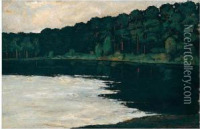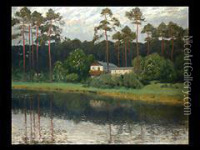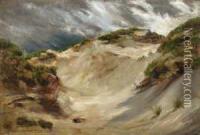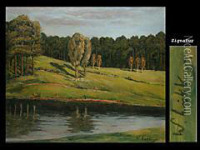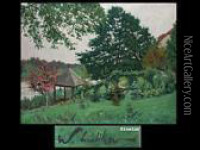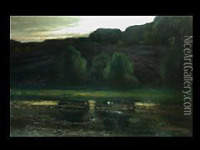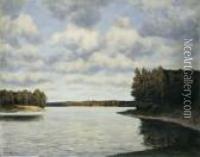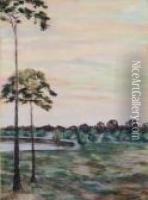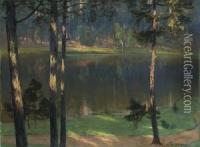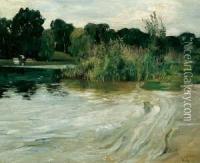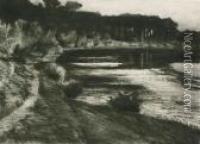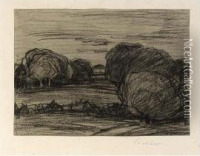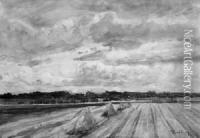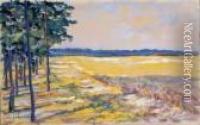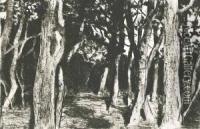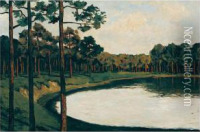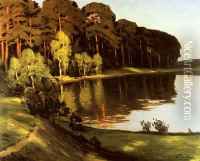Walter Leistikow Paintings
Walter Leistikow was a German painter and graphic artist who played a significant role in the Berlin Secession movement and helped promote modern art in Germany at the turn of the 20th century. Born on October 25, 1865, in Bromberg (now Bydgoszcz, Poland), Leistikow initially trained in business before deciding to pursue an artistic career. He studied at the Royal Academy of Arts in Berlin from 1883 to 1885 but did not complete his studies, as he found the instruction too conservative for his tastes.
Leistikow’s early work was influenced by the natural beauty of the German landscape, which he depicted in a moodily atmospheric style. He was particularly adept at capturing the play of light and shadow in forest scenes, which became a hallmark of his work. His style evolved over time, incorporating elements of Impressionism and eventually leading towards a more abstract representation of nature.
In 1898, Leistikow was a founding member of the Berlin Secession, an association of artists who sought to break away from the traditional art establishment and its restrictive exhibition policies. The Secession provided a platform for avant-garde artists to showcase their work and was instrumental in introducing Berlin audiences to new artistic trends, including Impressionism, Post-Impressionism, and early Expressionism.
As an artist, Leistikow received notable recognition during his lifetime. He became a cultural figure in Berlin and was friends with many prominent artists and intellectuals of the time, including Max Liebermann and Edvard Munch. Leistikow's influence extended beyond his paintings; he was also a prolific writer and critic, advocating for the recognition of the artistic avant-garde.
Tragically, Leistikow's life was cut short by illness, and he died on July 24, 1908, in Berlin at the age of 42. Despite his relatively short career, his contributions to German art were substantial. He is remembered today as an important figure in the transition from traditional 19th-century art to the modernist movements of the early 20th century.
